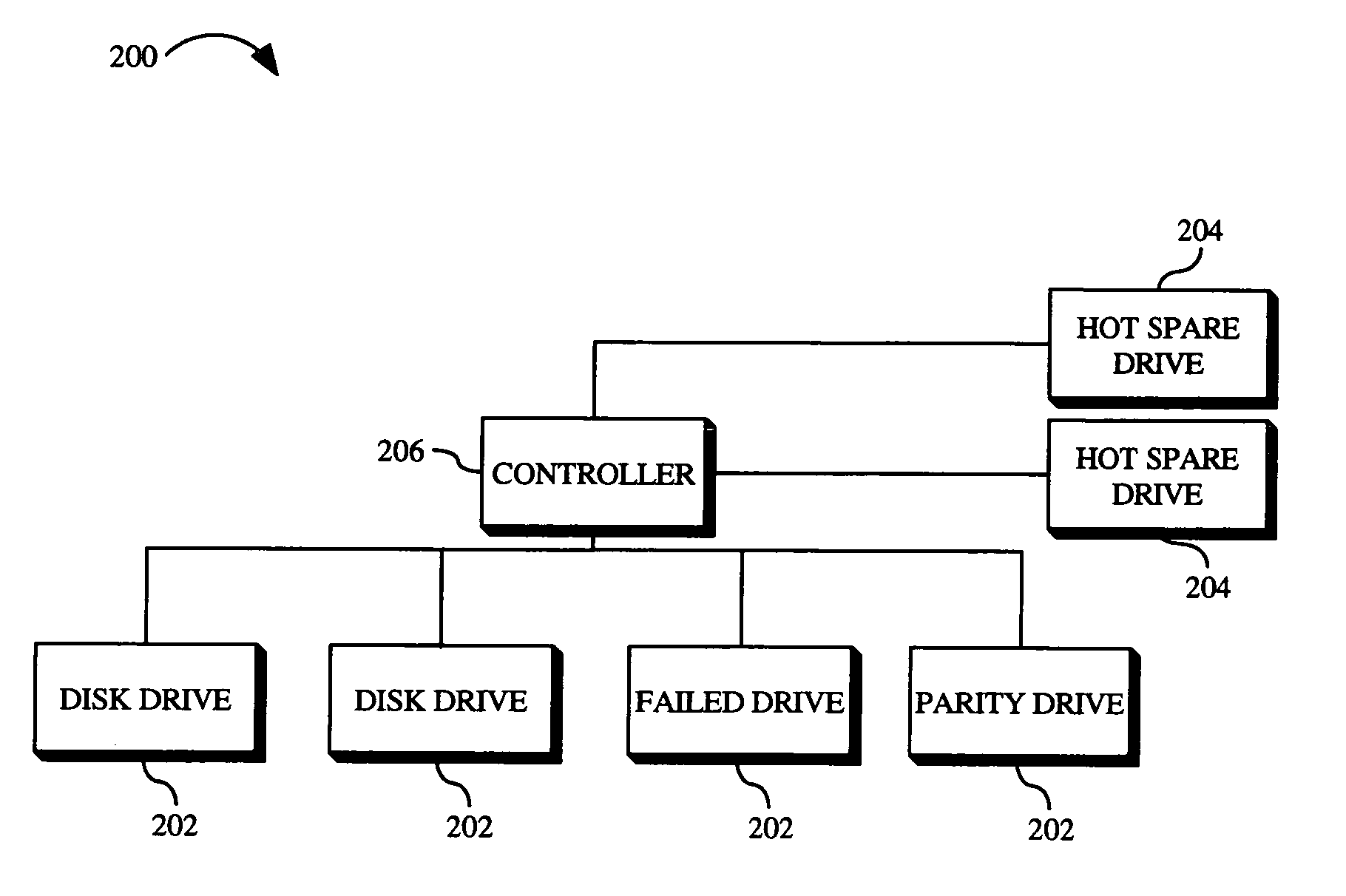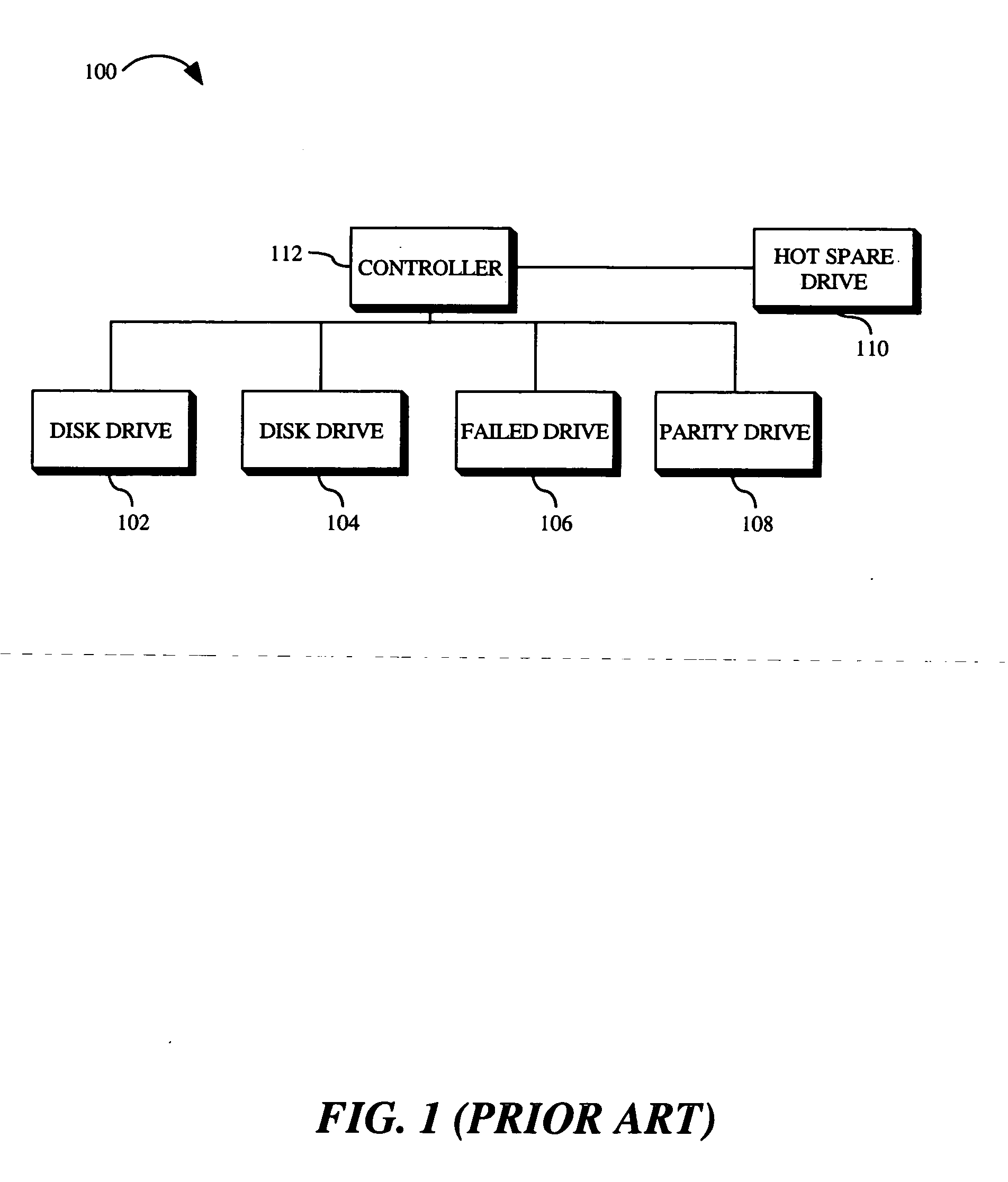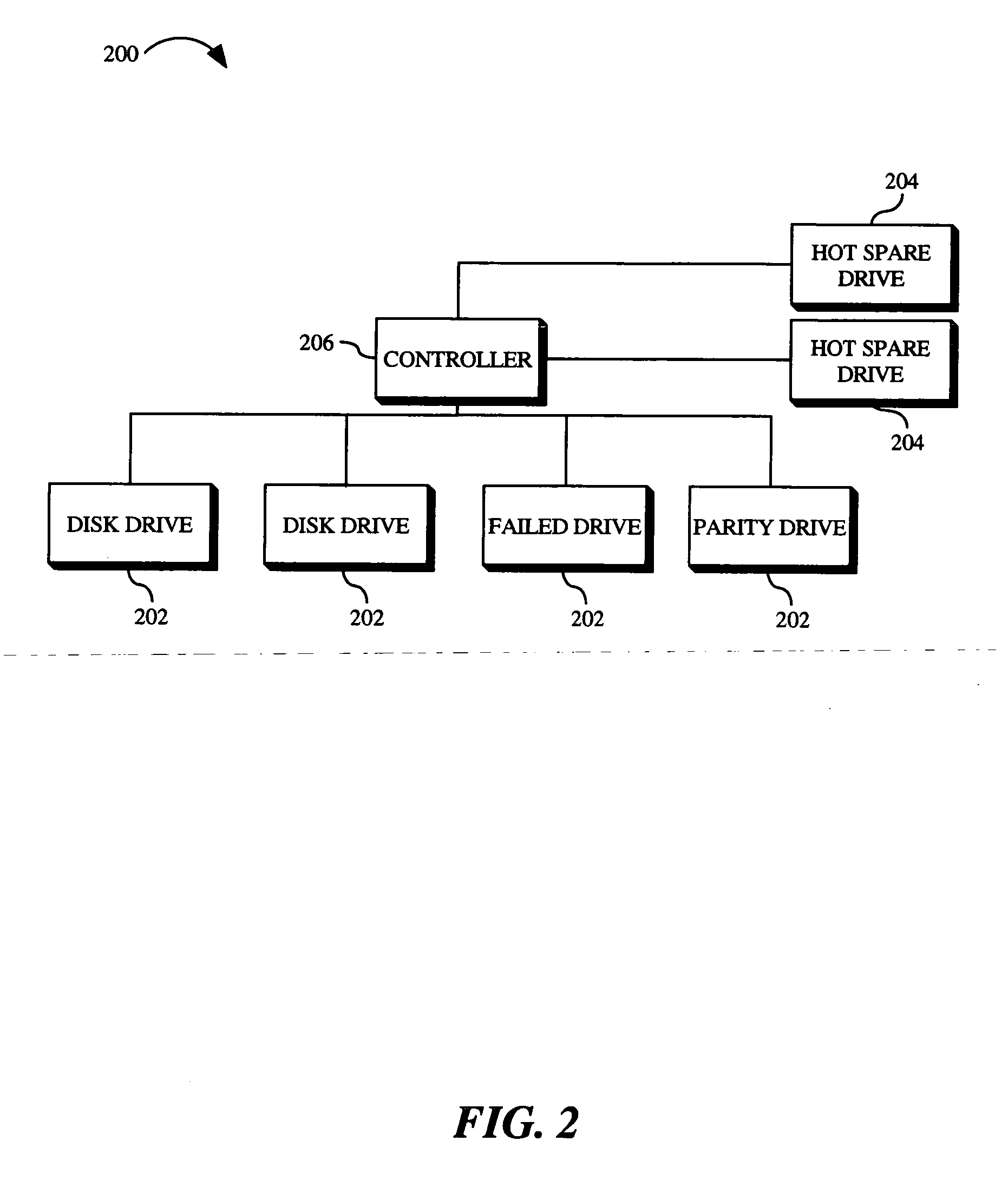System and method for reduction of rebuild time in raid systems through implementation of striped hot spare drives
- Summary
- Abstract
- Description
- Claims
- Application Information
AI Technical Summary
Benefits of technology
Problems solved by technology
Method used
Image
Examples
Embodiment Construction
[0013] Reference will now be made in detail to the presently preferred embodiments of the invention, examples of which are illustrated in the accompanying drawings.
[0014]FIG. 1 illustrates a typical RAID (Redundant Array of Independent Disks) configuration 100. Included in the configuration are a plurality of RAID disk drives (102, 104, 106 and 108). One of the RAID disk drives 108 is a dedicated parity drive (generally used in RAID 3 configurations). The dedicated parity drive 108 contains parity information which allows for data recovery / reconstruction if one of the RAID disk drives (102, 104 or 106) fails. Also included in the above-referenced configuration is a hot spare disk drive 110. A hot spare disk drive 110 is a disk drive that is called into use, typically by a RAID controller 112, upon the failure of one of the RAID disk drives. In the RAID configuration illustrated in FIG. 1, one of the RAID disk drives 106 has failed. Upon failure of the RAID disk drive 106, the hot s...
PUM
 Login to View More
Login to View More Abstract
Description
Claims
Application Information
 Login to View More
Login to View More - R&D
- Intellectual Property
- Life Sciences
- Materials
- Tech Scout
- Unparalleled Data Quality
- Higher Quality Content
- 60% Fewer Hallucinations
Browse by: Latest US Patents, China's latest patents, Technical Efficacy Thesaurus, Application Domain, Technology Topic, Popular Technical Reports.
© 2025 PatSnap. All rights reserved.Legal|Privacy policy|Modern Slavery Act Transparency Statement|Sitemap|About US| Contact US: help@patsnap.com



